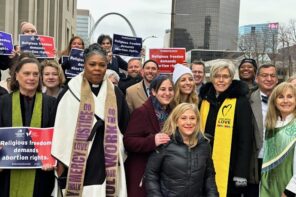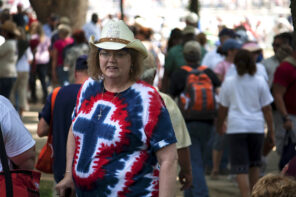It all begins with “survey says….”
The pollsters now regularly tell us that religion is on the decline and commentators can’t say enough about the so called, “Spiritual, but not Religious” (or SBNR)—the now common moniker for many (but not all) of the religiously unaffiliated.
But analysts often misunderstand what the surveys actually tell us. Some overplay their hand and try to predict the future. Others fail to acknowledge that different surveys measure slightly different categories: “no preference,” “nothing in particular” and “spiritual but not religious” can’t easily be lumped together.
And yet others actually underplay the research. For instance, this past Friday, the NY Times‘ Mark Oppenheimer wrote about four new books on the SBNR. His final takeaway?
At the very least, we might conclude that “spiritual but not religious”isn’t necessarily vague or wishy-washy. It’s not nothing, although it may risk being everything.
Really? Everything? It’s an awkward ending to an otherwise informative piece. But perhaps Oppenheimer didn’t get the whole story.
While many continue to speculate what the survey trends might mean for the future of American religion, sociologist Nancy Ammerman has recognized the limits of the surveys and done her own research.
She asked a diverse group of ninety-five Americans about the role of religion and spirituality in their everyday lives, letting those stories count as much as any checkbox. Whenever the difficult issue of definitions came up, the research team turned the question back on the participants and allowed them to speak about spirituality and religion in their own terms.
As it turns out, it is possible to map out and thematize the way Americans talk when they talk about spirituality and religion. And it certainly is not “everything.” In her recent book, Sacred Stories, Spiritual Tribes: Finding Religion in Everyday Life (Oxford, 2014), Ammerman lays out exactly this kind of map.
It turns out when Americans talk about “spirituality” they refer to religious traditions, to morality and living a virtuous life. At times they link the term to God or the spiritual world. At other times it refers to particular practices and rituals, to mystery or transcendence, meaning-making and beliefs.
By setting aside the typical categories academic researchers use when studying contemporary religion, Ammerman and her team document the complex ways religion shows up in a wide range of domains: in communities and conversations, in homes, at work and in public life, and not surprisingly around matters of health, illness and death.
This research qualifies what we have learned from surveys like the Pew Forum’s 2012 study. For example it suggests that “spiritual but not religious” is not so much an empirical category as it is political rhetoric. As Ammerman writes in the Journal for the Scientific Study of Religion,
“The ‘religion’ being rejected turns out to be quite unlike the religion being practiced and described by those affiliated with religious institutions. Likewise, the ‘spirituality’ being endorsed as an alternative is at least as widely practiced by those same religious people as it is by the people drawing a moral boundary against them.”
Or in other words: pollsters beware. It’s easy to proclaim the decline of religion, or the ascendance of the “everything” implied in a new all-encompassing spirituality, but American religion is made up of more than the language we use to define it.




